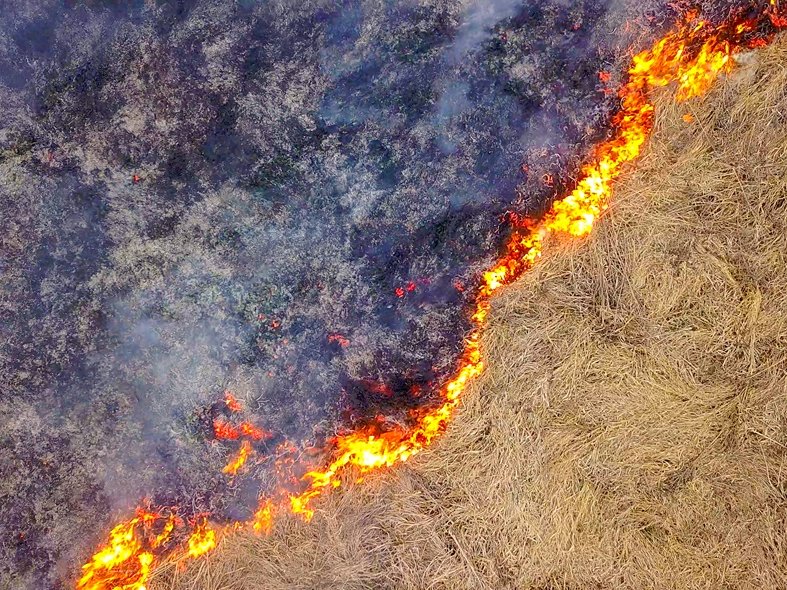The Great Fire of 1847 on Easter Day: A turning point in Bucharest’s history

By Bucharest Team
- Articles
In the mid-19th century, Bucharest still retained a medieval urban structure. Most buildings were made of wood, with shingle, reed, or straw roofs. In the absence of clear building regulations and a consolidated urban authority, the city had developed chaotically, with little consideration for public safety or fire protection.
The streets were narrow and winding, and the water supply network was virtually nonexistent. In such conditions, a simple accident could quickly escalate into disaster. Fire was part of daily life—used for cooking, heating, manufacturing, or lighting—but also a constant threat. Previous major fires in the city’s history, such as those in 1704, 1766, or 1804, had not led to any major reforms.
The commercial area was particularly vulnerable: inns, shops, workshops, and storage spaces, all crowded in the city center and built with flammable materials. Against this backdrop, Bucharest in 1847 was a city primed for a major fire—one that broke out on the most important Christian holiday.
A bullet and strong wind sparked the tragedy
The fire broke out on the morning of March 23, 1847—Easter Sunday in the old calendar. According to contemporary accounts, including that of Anton Pann, the tragedy began with a reckless act: the son of Lady Zinca Drăgănescu fired a pistol into a hay shed. The spark ignited the dry hay, and the strong wind did the rest.
The flames spread at an astonishing speed. Within hours, entire neighborhoods were engulfed. The area around the Old Princely Court, Manuc’s Inn, the suburbs along the left bank of the Dâmbovița River, Colțea, Sf. Vineri, and Calea Văcăreștilor were severely affected. In total, the fire destroyed over 2,000 buildings, including 12 churches.
Among the churches destroyed were the Domnească Church, Sf. Gheorghe Vechi, and Sf. Dimitrie. Thousands of people were left homeless. The city was thrown into chaos: terrified residents fled with whatever they could carry, the streets were blocked by carts and valuable belongings, and firefighters were overwhelmed.
Days of terror and a night saved by rain
The authorities’ response was hampered by a lack of resources and organization. Firefighters had only manual pumps, and water was difficult to source. For over 12 hours, the fire ravaged the city unchecked. In the following days, the ground remained hot and the air difficult to breathe.
A light rain on the night after the fire broke out proved to be the saving grace. The moisture reduced the flames' intensity, allowing the fire to be partially extinguished. Still, the city continued to smolder for days, and residents lived in fear of new flare-ups.
Many took refuge on the Metropolitan Hill, watching helplessly as the city burned. Anton Pann described how “on the streets you could hear the screams of women, the cries of children, and the desperate orders of soldiers sent to restore order.”
Massive losses and an international effort to rebuild
The final toll was devastating: 15 dead, dozens injured, over 2,000 buildings destroyed, and material damage estimated at over 30,000 gold coins. It was the most severe urban disaster Bucharest had experienced in the modern era.
The authorities responded quickly. Prince Gheorghe Bibescu coordinated the relief efforts. Foreign leaders also sent aid: the Sultan of the Ottoman Empire, Prince Mihail Sturdza of Moldavia, and Prince Miloš Obrenović of Serbia all contributed. Fundraising campaigns were launched, and wealthy merchants like Evanghelie Zappa provided financial support for reconstruction.
The city was rebuilt with greater care: regulations on building materials were introduced, shingle roofs were replaced with metal sheets, workshops using open flames were relocated to the outskirts, and the water supply network was expanded. It was a crucial step toward the modernization of the capital.
The 1847 fire: a turning point for Bucharest
The 1847 fire forever changed the course of the city’s development. It exposed the vulnerability of a city caught between the Eastern world and Western modernization. At the same time, it mobilized both the community and the authorities in a shared effort of reconstruction.
The fire was not only a catastrophe but also a lesson in organization, prevention, and solidarity. It inspired chronicles, firsthand accounts, and administrative measures that contributed to a safer, more thoughtfully planned city.
Today, few physical traces of the Great Fire remain, but its memory endures in archives, historical documents, and the collective consciousness of Bucharest. The 1847 fire is a pivotal chapter in the city’s history—one that reveals both how fragile a city can be, and how powerful the will to rebuild it truly is.






























